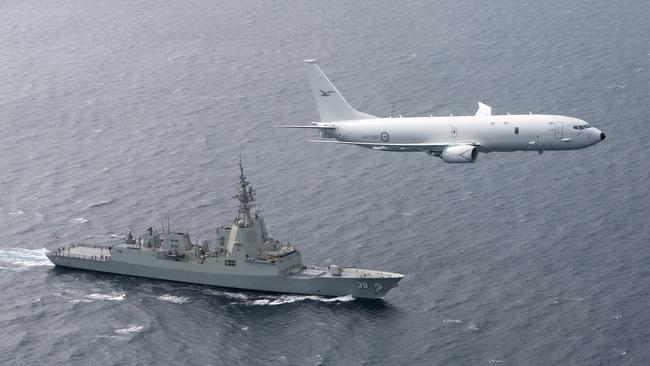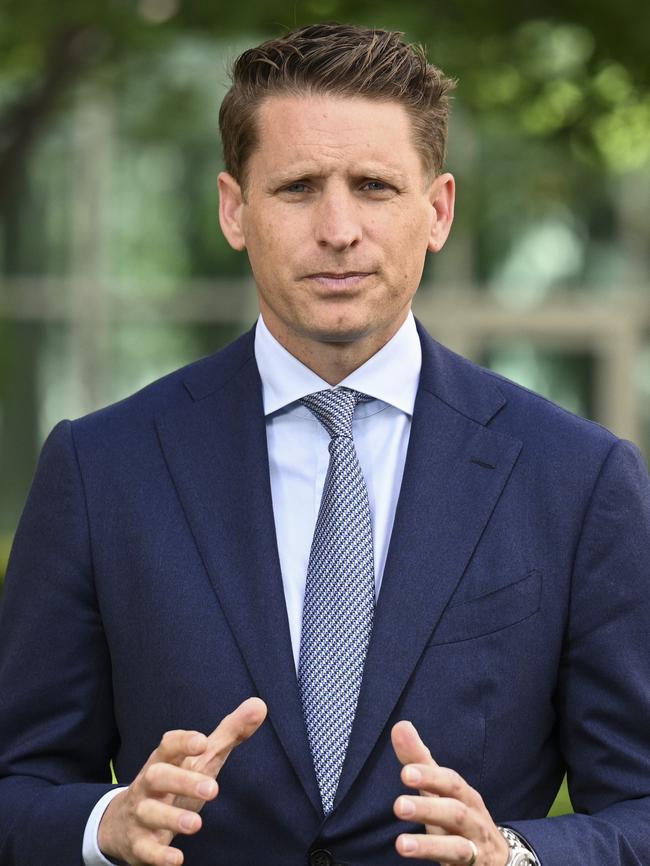‘Watching for boats hurts ADF capability’, Coalition warns
The Albanese government has been accused of undermining the Australian Defence Force’s warfighting capabilities by using sophisticated RAAF aircraft to hunt for people-smuggling boats.

The Albanese government has been accused of undermining the Australian Defence Force’s war-fighting capabilities by using sophisticated RAAF aircraft to hunt for people-smuggling boats amid a slump in contracted surveillance flights.
Opposition defence spokesman Andrew Hastie said every hour the RAAF’s submarine hunting P-8A Poseidon jets and C-130J transporters were required to search for boats was an hour lost from focused military training.
The Australian revealed on Monday that the Australian Border Force’s surveillance flights off Australia’s northwest coast have fallen by 22 per cent in two years.
Home Affairs Minister Tony Burke dismissed the fall as the failure of a “single contractor”, and said he had been assured by Operation Sovereign Borders commander Brett Sonter that “what is required for surveillance is being done”.
“There are other security assets which we have, which have been deployed,” Mr Burke told ABC radio, confirming the use of ADF assets to fill the gaps.
Mr Hastie said: “The RAAF should not be bridging a yawning capability and security gap caused by Labor’s weakness in securing our borders. These personnel and aircraft should be focused on their primary purpose – to prepare to fight and, if necessary, win our wars.”

US-owned contractor Leidos’s inability to meet its contracted flying hours under its $1.5bn contract with the government is not the only surveillance shortfall the ABF has had to contend with. Its own maritime surveillance hours, undertaken by Cape-class patrol boats and other vessels, fell by 19 per cent over the past two years.
There has been a surge in people-smuggling voyages to Australia over the same period, including at least five intercepted boats in the past two months.
Leidos took over the ABF’s $1.5bn aerial surveillance contract in 2021 when it acquired the previous operator, Cobham Aviation Services.
It’s understood the company suffered an exodus of pilots during the Covid pandemic but has since rebuilt its workforce.
The company will compete with other providers in an upcoming tender process for a new 10-year surveillance contract worth an expected $2.6bn.
The field for the process is likely to narrow if beleaguered regional carrier Rex goes under. The airline had previously expressed interest in taking over the contract.
Other companies set to compete for the work include Canada-based Pal Aerospace and US firm Metrea.
The government is also due to put out a tender soon for new aerial surveillance contracts under the Pacific Maritime Security Program.
Labor doubled the budget for aerial surveillance targeting illegal fishers and transnational criminals in the Pacific to $24m from this year.
A Defence spokesman said the Pacific surveillance program would include fixed-wing aircraft, uncrewed aerial vehicles and satellite capabilities.
“The request for tender for uncrewed aerial vehicles was released in 2023 and is undergoing evaluation,” he said.
“The request for tender for fixed-wing aerial surveillance services is expected to be released before the end of 2024.”




To join the conversation, please log in. Don't have an account? Register
Join the conversation, you are commenting as Logout